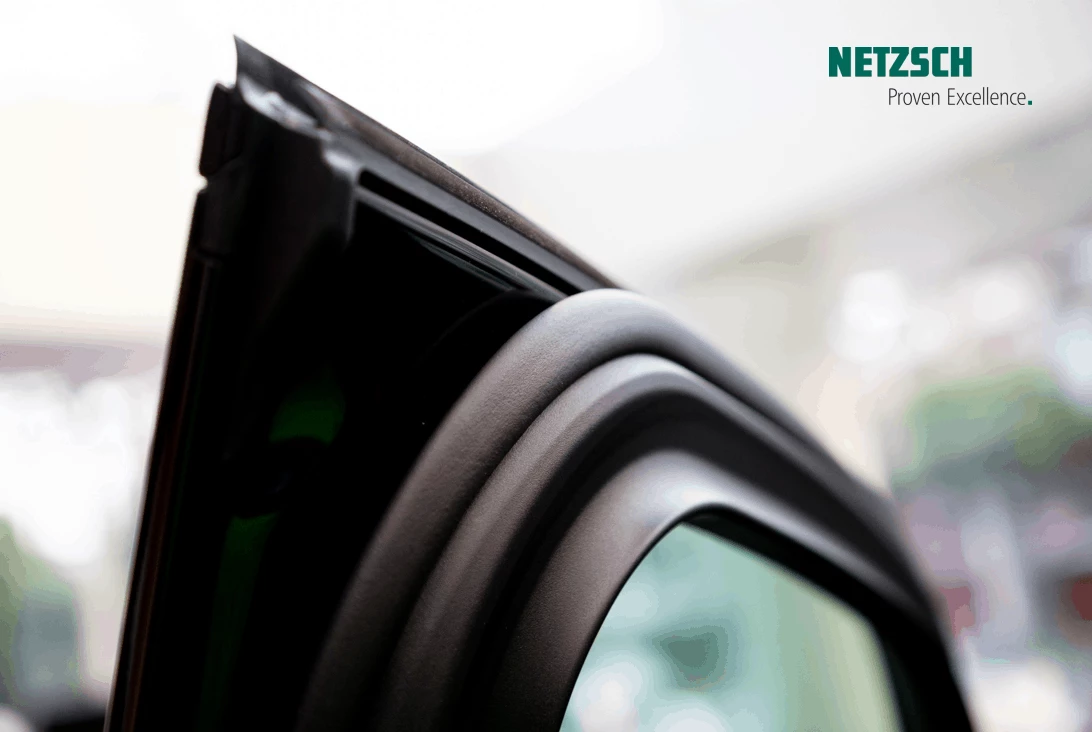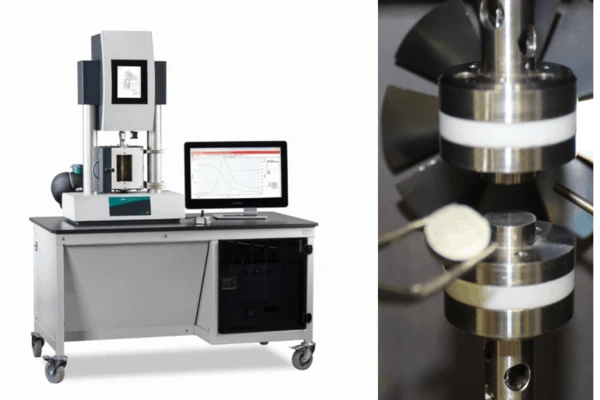
26.01.2021 by Milena Riedl, Dr. Sahbi Aloui
Monitoring Mechanical Properties of Elastomeric Materials During Application
The required mechanical and dielectric property profile of elastomeric materials is achieved by selecting the suitable polymer, filler and additives for the application field. During their service life, elastomeric materials in tire, sealing and automotive applications undergo constant change due to different mechanical loads and environmental conditions. The material starts showing signs of fatigue, thermal aging and wear. This leads inevitably to the replacement of the built-in products. Any signs of wear or tear are due to changes in the material's inner structure.
Read more about the cost-effective way to monitor the mechanical properties of the elastomeric materials during application.
The material starts showing signs of fatigue, thermal aging and wear. This leads inevitably to the replacement of the built-in products. Any signs of wear or tear are due to changes in the material´s inner structure.
A cost-effective way to monitor the mechanical properties of the elastomeric materials during application in order to identify the change in property profile is discussed in the research paper “Simultaneous characterization of dielectric and dynamic mechanical properties of elastomeric materials under static and dynamic load”, which is available here!
A “marker” for analyzing the microstructure is already present by means of DEA
The filler in elastomeric materials serves as a mechanical reinforcement and in the case of carbon black, the filler can also be electrically conductive. The carbon black is used as a “marker” for a characteristic “snapshot”. It continuously monitors and “reports” the actual mechanical status of the elastomer material” [1].
Change in the filler network due to mechanical damage
Dielectric analysis is a very effective tool to acquire knowledge about the inner structure dynamics of matter. The dynamic-mechanical analysis reflects more the macroscopic behavior of the materials. Simultaneous dynamic-mechanical and dielectric measurements combines these benefits to establish a relationship between the mechanical state and the “snapshot” dielectric spectrum of the material [1]. The storage modulus monitored by DMA is directly related to the dielectric conductivity monitored by DEA, regardless of the mechanical damage that occurred within the sample.

The authors of the research paper “Simultaneous characterization of dielectric and dynamic mechanical properties of elastomeric materials under static and dynamic load”, published in the interdisciplinary journal Polymer by Elsevier, examine structural changes in the filler network due to different static and dynamic loads in real time. The full paper is available free of charge until March 8, 2021!
For further queries, Dr. Horst Deckmann and Dr. Sahbi Aloui are very pleased to hear from you.
Greater flexibility with the NETZSCH DiPLEXOR® 500 N
The simultaneous dynamic-mechanical and dielectric measurements of the carbon black filled SBR samples were performed with the dynamic-mechanical and dielectric analyzer NETZSCH DiPLEXOR® 500 N (Figure 1), an advance development of the DMA GABO Eplexor® systems. Key feature of these systems are separate generation of static and dynamic loads along with independent settings. It makes the system suitable for complex measurements and offers at the same time greater flexibility. Additionally, the modular design allows adaption of the sensibility to sample dimension and stiffness.
Source
[1] Sahbi Aloui, Andrej Lang, Horst Deckmann, Manfred Klüppel, Ulrich Giese, Simultaneous characterization of dielectric and dynamic-mechanical properties of elastomeric materials under static and dynamic load, Polymer, Volume 215, 2021, 123413, ISSN 0032-3861, https://doi.org/10.1016/j.polymer.2021.123413. (http://www.sciencedirect.com/science/article/pii/S0032386121000367)